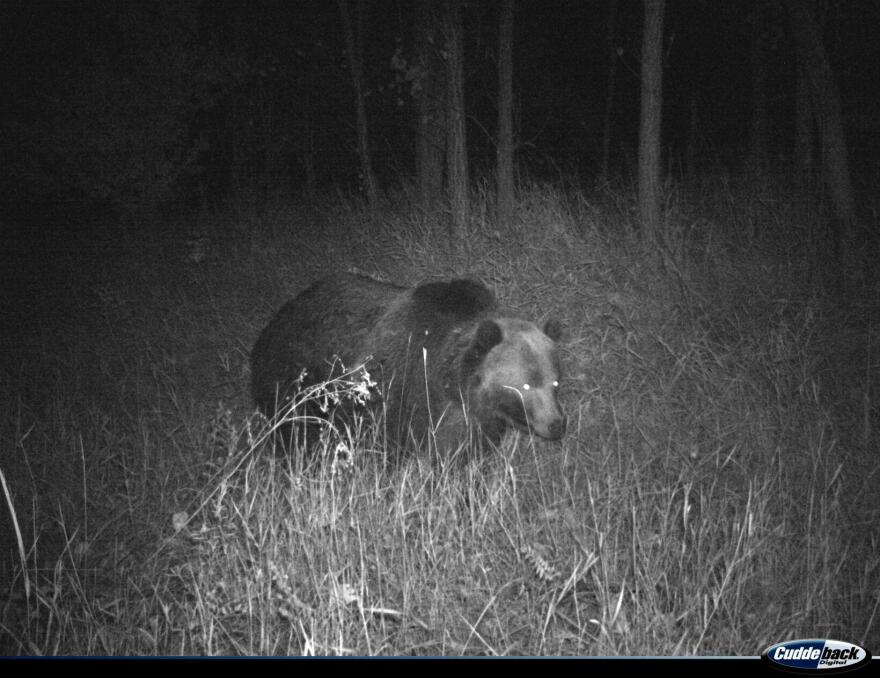The Interagency Grizzly Bear Committee celebrated 40 years of recovery work during their winter meetings in Bozeman.
Executive Coordinator David Diamond emphasized grizzlies’ population growth and range expansion during that time. "The recovery of grizzly bears in the lower 48 states is a conservation success story," Diamond said.
A once-dwindled population of fewer than 1,000 bears in the Lower 48 has more than doubled, with grizzlies now occupying a territory larger than Iowa across the Northern Rockies and Pacific Northwest. Just this summer in Montana, grizzlies have been seen in the Pryor Mountains and Upper Missouri Breaks for the first time in over a century.
In the last two years, Montana, Idaho, and Wyoming have petitioned the federal government to delist grizzlies. At the heart of their concerns are bears in and around Glacier and Yellowstone national parks.
The federal government has tried to delist Yellowstone-area grizzlies twice before. Now, with a possible delisting recommendation coming in early next year, bear managers are working to address concerns that could come up if delisting faces litigation yet again.
One of the main reasons delisting was blocked during the government’s last attempt to remove protections was the lack of genetic connectivity – bears migrating and reproducing between the Northern Continental Divide and Yellowstone ecosystems.
Biologist Frank van Manen, head of the Interagency Study Team, told managers four subadult males had been recorded in the last two years trekking over a hundred kilometers, or more than 60 miles, across Montana. "These distances are quite a bit larger than the current distance between the two occupied range extents, which is about 100 kilometers, so that is an indication that an actual dispersal that leads to a genetic connectivity event through reproduction is actually, certainly feasible," he said.
While bear managers think grizzlies are now traveling distances that could lead to reproduction across ecosystems, it hasn’t been documented yet. To speed up that exchange, biologists are planning to capture young, female bears from around Glacier and ship them down into Yellowstone in the summer of 2024 or 2025.
Ken McDonald, wildlife chief for Montana Fish Wildlife and Parks, said this plan is a direct attempt to meet the court’s conditions for delisting. "That also is in response to the second thing the judge identified as deficient, which is making sure there is genetic interchange between the populations."
That interchange could bolster the long-term health of the genetically isolated Yellowstone population. McDonald told the interagency committee that Montana, Idaho, and Wyoming are working on an agreement to collectively manage Yellowstone’s bears after delisting, which contains a commitment to relocate at least one bear per generation down from the Northern Continental Divide Ecosystem.
Not everyone agrees with the manmade relocation plan. Andrea Zaccardi runs carnivore conservation efforts for the Center for Biological Diversity, one of the environmental groups that successfully sued to overturn the 2017 delisting. "Trucking bears into the ecosystem is not ideal because it's not a long-term solution. What the agency really needs to be doing is protecting the connectivity corridors so there’s natural gene flow," she said.
Protecting connectivity corridors means helping bears cross areas where people live and drive. The dedicated ecosystems for grizzly recovery are in areas that almost entirely consist of public lands. But a bear’s path between them likely requires traversing through private land and two large highways.
Bear managers are dedicating more staff to preparing people for grizzlies’ travel. Again, FWP administrator Ken McDonald: "And the newest people, a lot of where their focus in that is is in the in-between areas, trying to get ahead of the bears for once instead of chasing the bears."
Other agencies are also trying to get ahead of the wandering grizzlies. The Montana Department of Transportation recently received a grant for a feasibility study on a wildlife crossing across I-90 between Missoula and Garrison. The area has been identified as a key corridor for bears moving between the two ecosystems.
The interagency committee is also planning a summit early next year on education and community outreach, hoping to prepare the public to coexist in expanding grizzly territory.
U.S. Fish and Wildlife Service started a 12-month review of grizzly bear’s status in the Northern Continental Divide and Greater Yellowstone ecosystems early this year, so a suggestion to delist could come as early as February 6.



